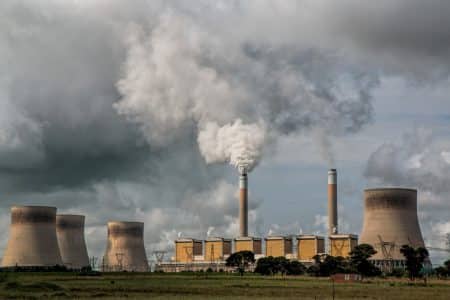How Arctic Wind Can Affect Our Weather - Dispatch Weekly
January 12, 2017 - Reading time: 4 minutes

Recent reports published by scientists have examined how the effects of climate change have altered the way cloud patterns form, making it harder for scientist to predict weather changes using instruments in satellite orbit. Even though the planet is getting warmer, cold weather still happens in winter or at very high elevations or high latitudes year-round. Northern hemisphere winter weather patterns are a complex interplay between the upper atmosphere conditions over polar regions and mid-latitude conditions over the oceans and on land.
Climate change has also brought about with it uncertain weather changes which have impacted regions that were once free from such problems. Recently we have seen cold snowy weather in areas such as southern Italy and southern turkey in winter months, which in the past have remained relativity mild and free from snow. Today’s scientists point to climate change as:
“the biggest global health threat of the 21st century.”
It’s a threat that impacts all of us—especially children, the elderly, low-income communities, and minorities—and in a variety of direct and indirect ways. As temperatures spike, so does the incidence of illness, emergency room visits, and death. Source
A recent study on the North Pacific circulation patterns over the past 1.2 million years determined that sea ice on coastal areas can be an important factor in ocean circulation, therefore influencing climate at global and regional levels. In addition to affecting the ocean circulation patterns, Arctic sea ice is melting more rapidly and for longer periods each year, and is unable to replenish itself at the historical thickness levels in the briefer, warmer winter season. This can destabilize the polar vortex (see below) and raise the barometric pressure within it.

However, recent weather changes in the UK have been a mixture of climate change and strong polar winds, pushing cold arctic air to mix with warm air from the equator. The usual cold air in the polar region is typically locked in a vortex of strong winds which circulate around the polar region. This is called Arctic oscillation, it is a climate pattern characterized by winds circulating counter clockwise around the arctic at around 55N latitude, sometimes referred to as the Northern Hemisphere annular mode. This vortex of cold air protects the mild latitudes where we live and help us escape the bitterest weather.
This recent weather in the UK is the result of the vortex weakening, which has allowed for the cold arctic air to escape and push south and mix with the mild latitudes. This is called the negative phase, which basically means the belt of winds becomes weaker and more distorted in the negative phase, which allows an easier southward penetration of colder, arctic air -masses and increased storminess into the mid-latitudes.
 These arctic conditions have resulted in the cold snaps in the UK; however, these are rare and occur every 4-5 years. There is fixed timescale to how long these cold snaps last but they usually only last for up to 10 days. As this cold snap passes this winter, it is not likely that another cold snap will occur for another 4-5 years. However, weather is becoming more unpredictable and it is likely that future Negative Phases will be hard to predict, thus putting some countries on high alert for cold weather.
These arctic conditions have resulted in the cold snaps in the UK; however, these are rare and occur every 4-5 years. There is fixed timescale to how long these cold snaps last but they usually only last for up to 10 days. As this cold snap passes this winter, it is not likely that another cold snap will occur for another 4-5 years. However, weather is becoming more unpredictable and it is likely that future Negative Phases will be hard to predict, thus putting some countries on high alert for cold weather.

DW Staff
David Lintott is the Editor-in-Chief, leading our team of talented freelance journalists. He specializes in covering culture, sport, and society. Originally from the decaying seaside town of Eastbourne, he attributes his insightful world-weariness to his roots in this unique setting.




